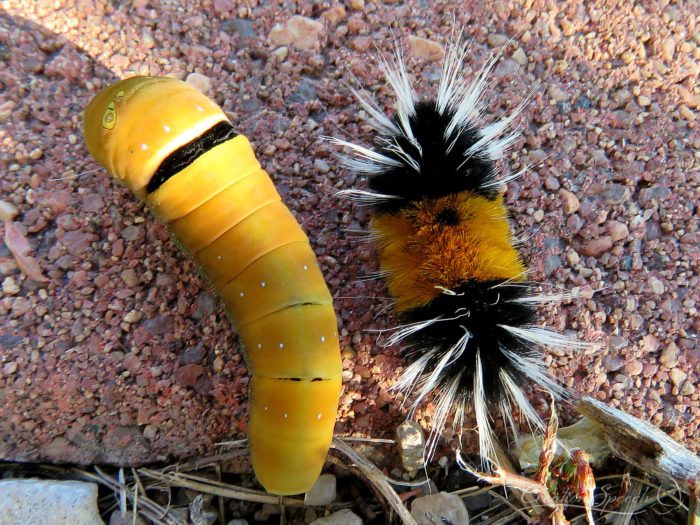“The LORD is good to all, and his mercy is over all he has made.” Psalm 145:9
In the last few weeks, the caterpillars on our Canada Red Chokecherry trees have been leaving the trees to find a hiding place and transform into chrysalises or pupae. They are easy to spot, seemingly vulnerable to predators. However, in God’s mercy, they instinctively move from the trees early in the morning before predators are active. Additional protections are described below. The LORD is good and merciful to all that He made so they give Him glory for many generations.
The Spotted Tussock Moth larva has bristles that make it hard for birds to swallow and the loose hairs irritate soft tissues. The hairs can hook onto skin including human skin. Reportedly when provoked the caterpillar can sting and in one child, cause an allergic reaction, possibly associated with a protein called thaumetopoein. The caterpillar incorporates these protective hairs in the cocoon where it rests as a pupa over the winter. See the remarkable work of the larva in making the silk-lined home starting at the 2-minute mark of a video at this link. The resulting moth also has a remarkable protection from bats. Praise God for His creative protection.
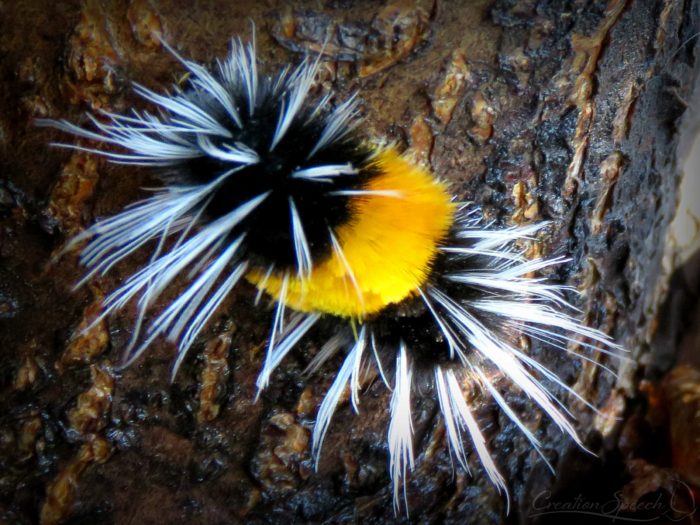
The Two-Tailed Tiger Swallowtail larva is a example of God’s goodness to the species (beauty and protection) and to us (illustration of the gospel message, will cover below). The caterpillar is green through its life in the tree. A black slit may deter predators as it looks like an opening mouth.
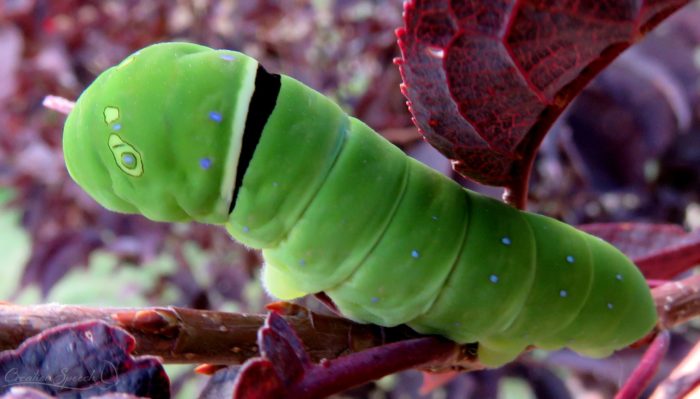
It turns from a green color to an orange color just before it leaves to make a chrysalis. This color change may make the larva less familiar to birds that normally seek green caterpillars for food. When disturbed, the caterpillar lifts up in front and puffs up its head and sways it back and forth appearing as a snake.
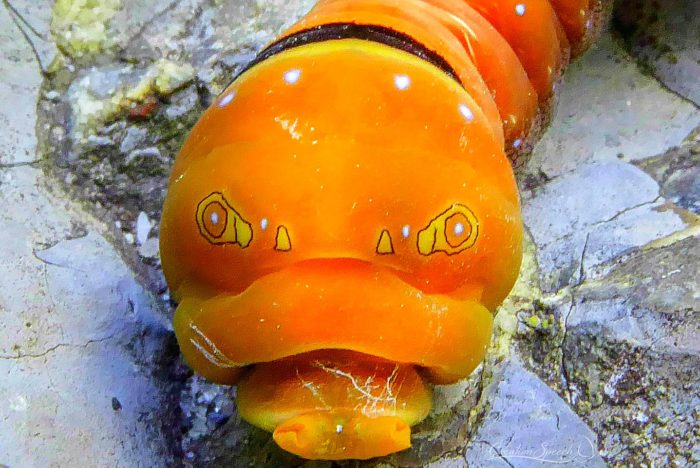
Caterpillars’ snake appearance remind us of the cursed life before a new birth in Jesus Christ. Snake imitations are a common trait among mature butterfly larva. I wondered, why this design? Only newly born snakes are that small and maybe not a great threat to birds, frogs, and lizards. Well, here is my thought. A secondary purpose of this design is for our benefit. A serpent tempted Eve in the Garden of Eden and man sinned against God by eating the forbidden fruit. As one result, the serpent was cursed to move on its belly and eat dust as a snake (Genesis 3:14). So snakes are a reminder of cursed-life caused by man’s sin. The caterpillar stage of the butterfly illustrates this position in life, even more so as a snake imitation! By God’s grace He sent His son Jesus to die on the cross for our sins. By Christ’s obedience and resurrection, and our repentance and faith in Him, we are forgiven and born again in Jesus Christ. The transformation of the larva into a butterfly represents this new life in Christ. Apart from dying to itself to transform into a butterfly, the caterpillar cannot represent the new life. God is merciful to give us this gospel CreationSpeech for children who are generally eager to learn from caterpillars, butterflies, and moths. Tell the good news about our salvation in Jesus to the next generation!
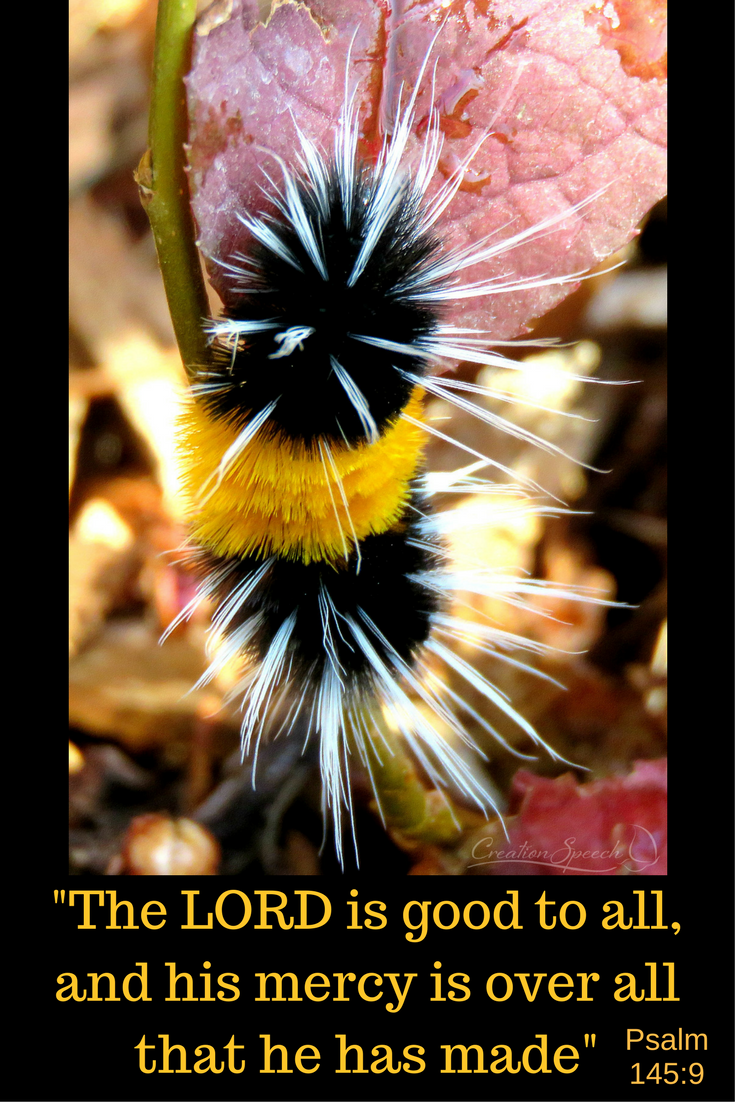
Save
Save
Save
Save
Save
Save
Save
Save
Save
Save
Save
Save
Save
Save
Save
Save
Save
